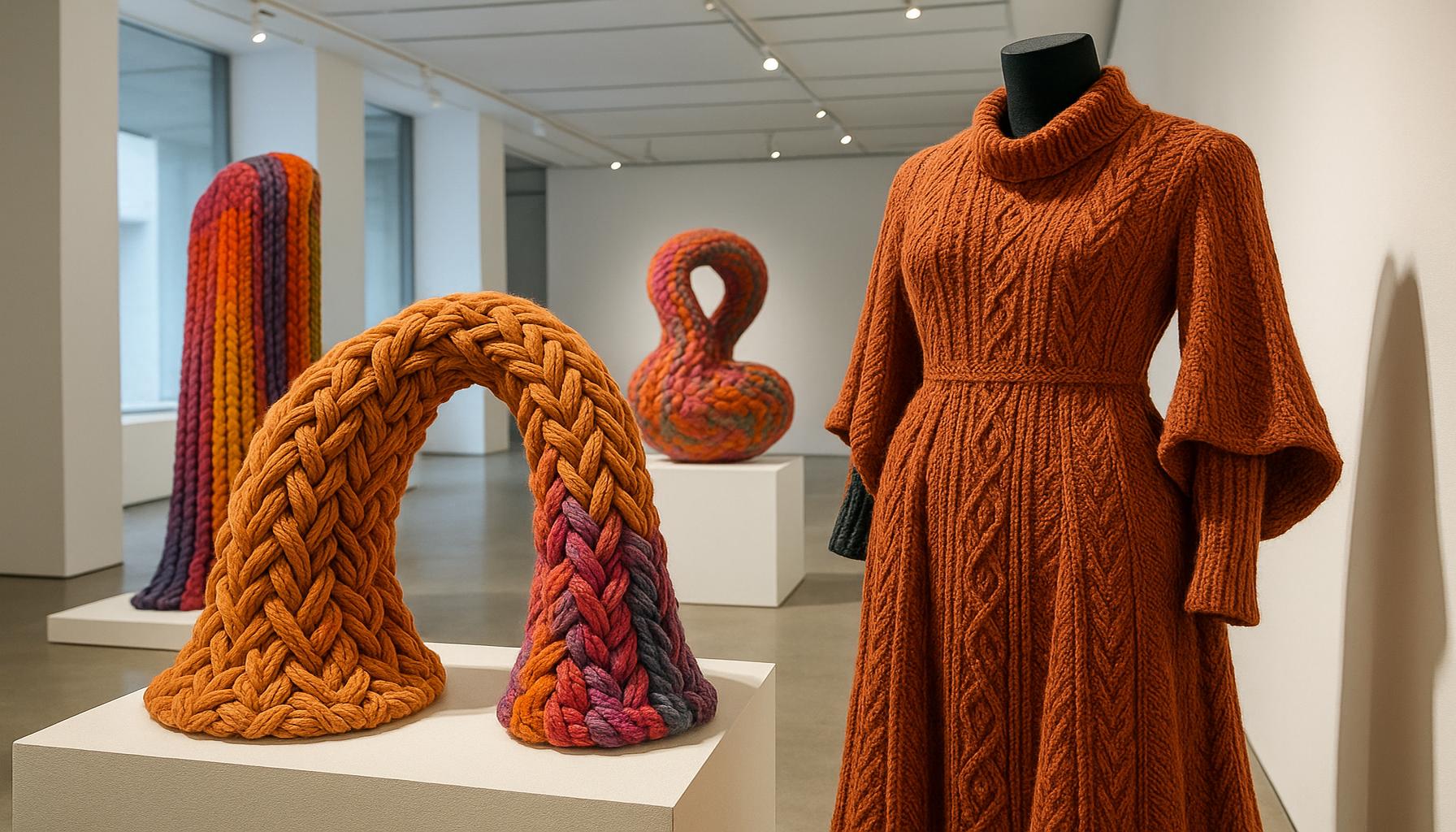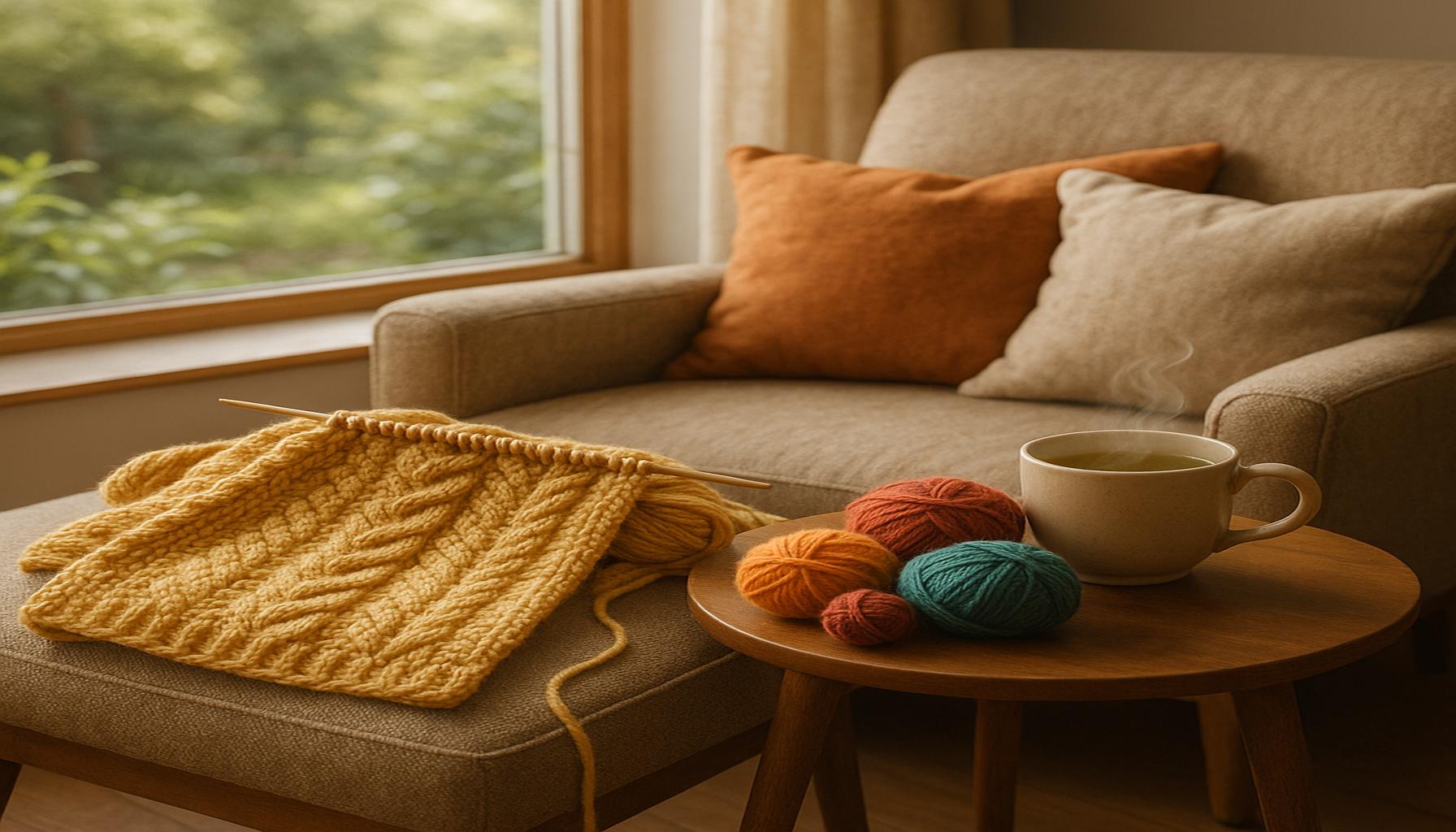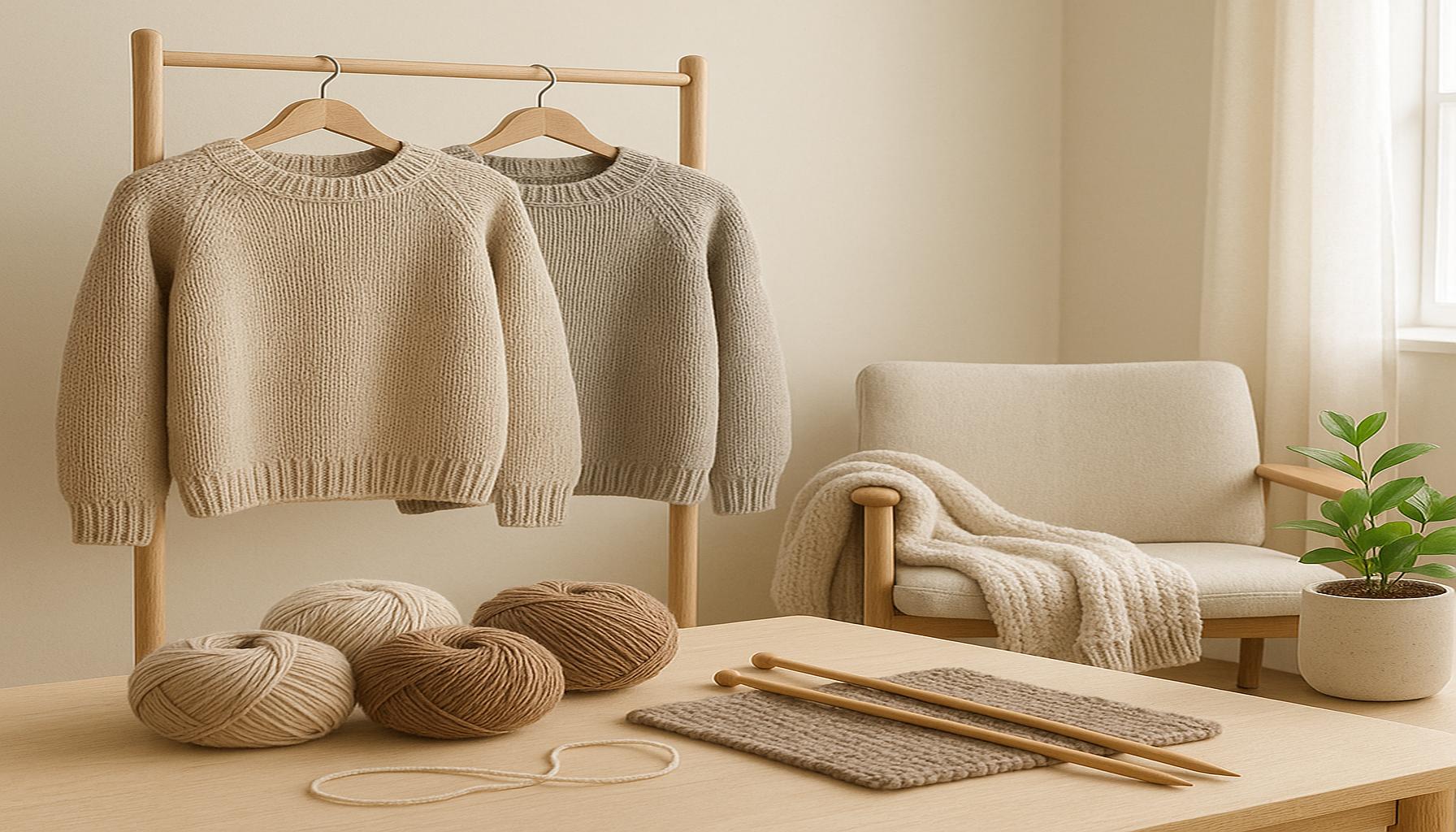The Influence of Knitting on Contemporary Art: Intersections between Fashion and Sculpture

Shifting Perceptions of a Time-Honored Craft
Once relegated to the realm of domesticity, knitting has seen a remarkable transformation as it re-establishes its identity in the contemporary art scene. The craft, traditionally viewed as a pastime for homemakers, has evolved into a medium that blurs the lines between fashion and sculpture. Today, simple strands of yarn are ingeniously woven into thought-provoking and expressive installations that compel viewers to ponder the very essence of artistry.
Prominent artists are at the forefront of redefining knitting’s place in the artistic world, using their works to challenge societal norms and stimulate dialogue. For instance, Olek, famous for her vibrant and intricate yarn installations, often blankets public spaces with colorful crochet work, confronting themes such as consumerism and identity. Her pieces not only beautify but also provoke conversations about the environments they inhabit, demonstrating the power of knitting as a medium for commentary.
Another notable figure is Chiharu Shiota, whose elaborate thread installations create immersive environments that captivate audiences. By intertwining threads that span entire rooms, Shiota prompts viewers to reflect on themes of memory, loss, and identity. Her work delves into the connections between space and emotion, inviting the audience to navigate through a labyrinth of threads symbolizing the complexities of human experience.
Meanwhile, Annette Messager integrates knitting with mixed media to explore nuanced themes of femininity and domesticity. Her installations often amalgamate textiles with found objects, creating a narrative that interrogates women’s roles within the household and broader society. This interdisciplinary approach enriches the conversation surrounding women’s art, showcasing how traditional skills can be mobilized to tell contemporary stories.
The resurgence of knitting within the art world also coincides with a growing movement toward DIY enthusiasm and craftivism, which champions the importance of handmade goods and social activism. In an era where sustainability and individuality are increasingly valued, knitting transforms into both a personal and collective form of expression. This craft becomes an embodiment of resistance against mass production and a way to reclaim agency over one’s creative output.
Reflecting on the significance of these intersecting themes encourages a broader appreciation for knitting not just as a pastime, but as an evolving and legitimate form of artistic expression. In doing so, it challenges our perceptions of what constitutes art and how unconventional skills can contribute meaningfully to contemporary narratives. Through the lens of these artists, we are reminded that even the simplest hobbies can inspire profound reflections and societal conversations.
DISCOVER MORE: Click here to dive deeper
The Knitting Revolution: Where Art Meets Fashion
The revival of knitting as a formidable force in contemporary art has sparked a seismic shift in how we view both the craft and its creative possibilities. Previously confined to cozy living rooms and quaint knitting circles, the once humble yarn is now a key player in the art world, seamlessly weaving its way through the realms of fashion and sculpture. This transformation is indicative of shifting cultural attitudes toward handmade artistry, inviting new narratives that speak to both individual creativity and cultural dialogue.
One of the defining characteristics of this revolution is the emergence of what some have dubbed the “knitwear art movement.” This movement is characterized by the convergence of fiber arts with traditional artistic expressions, creating a dynamic dialogue that challenges preconceived notions about the boundaries of art. Artists are not only experimenting with new materials and forms but also embedding their works with social and political commentary that resonates deeply with contemporary audiences.
The intersection between fashion and sculpture is where this artistic phenomenon truly thrives. Here are some key aspects of this crossover:
- Textural Innovation: Many artists exploit knitting’s tactile qualities, using textures to engage the senses and evoke emotional responses. The juxtaposition of soft yarns with hard sculptural forms blurs traditional divisions, allowing for a multi-dimensional exploration of materiality.
- Wearable Art: The fusion of knitting with fashion has birthed a genre where garments become canvases. Notable designers, such as Kate Spade, have embraced knitwear not just for its functionality, but for its artistic potential, creating pieces that challenge consumerist notions of clothing.
- Collective Engagement: Many knitting initiatives encourage community involvement, transforming what may seem like solitary work into collaborative projects. Groups such as the Knitting for Peace movement not only aim to create beautiful pieces but also foster social change, illustrating how collective creativity can impact society.
As knitting interlaces itself into the fabric of contemporary art, it brings with it a host of challenges and opportunities for self-expression and criticism. Artists are increasingly using these fibers to question the value placed on mass-produced art compared to handmade pieces and to reflect on themes of sustainability and individuality. The resurgence of preference for artisanal creations aligns with broader movements emphasizing ethical consumption, where handmade and locally sourced goods are gaining traction.
Moreover, the dialogue surrounding knitting extends beyond the art itself and includes discussions about its historical context. The craft has often been associated with women and domesticity, leading to a rich tapestry of gender-related narratives. By resurfacing the art of knitting, contemporary artists are reclaiming this narrative, amplifying women’s voices in the art world and challenging the stereotypical associations of the craft.
The intersection of knitting, fashion, and contemporary art is a testament to the craft’s versatility and relevance in today’s cultural landscape. As artists continue to push these boundaries, the medium of knitting expands, inviting both artists and audiences to introspectively engage with materials that symbolize freedom, creativity, and community.
Knitting, once perceived merely as a craft for the home, has woven its way into the fabric of contemporary art, emerging as a vibrant medium that bridges the gap between fashion and sculpture. This seamless intertwining invites examination of how traditional knitting techniques are being reimagined in the hands of contemporary artists. In recent years, many artists have turned to knitting not just as a technique but as a critical commentary on the fast pace of modern life. For instance, the once utilitarian aspect of yarn has been transformed into thought-provoking installations that challenge our understanding of consumerism and the handmade. By opting for larger dimensions and unconventional materials, these artists are pushing the boundaries of what knitting can represent, whether through oversized sweaters displayed as sculptures or tactile wall hangings. Moreover, artists like Magda Sayeg, who is renowned for her yarn bombing projects, utilize public spaces to create soft, colorful interventions that engage the community in a dialogue about public art. Her work exemplifies the intersection of fashion and sculpture, as one can not only admire the piece but also contemplate its cultural implications. This dynamic interaction between the viewer and the artwork invites deeper reflection on themes like community, identity, and the recontextualization of textiles.Knitting in contemporary art also serves as a unique form of storytelling. Artists often use techniques that reflect personal narratives or collective histories, effectively blending individual identity with broader social commentaries. This capability for narrative enrichment elevates knitting from mere aesthetic appeal to a significant form of artistic expression, fostering an appreciation for the meticulous labor and emotional intent behind each stitch.As the line between functionality and artistry continues to blur, knitting’s role in contemporary art not only challenges viewers to reconsider its purpose, but also redefines the audience’s expectations of what art can be. This ongoing exploration provides endless opportunities for artists and scholars alike to delve deeper into the multifaceted relationship that exists between these two seemingly disparate realms, ultimately enriching both the fields of fashion and sculpture.
DIVE DEEPER: Click here for our ultimate guide
The Artistic Dimensions of Knitting: A New Visual Language
As knitting continues to weave its narrative into the 21st-century art scene, contemporary artists are reshaping perceptions by creating works that defy conventional categorizations. By employing knitting not only as a technique but as a conceptual framework, these artists blur the lines between craft and high art, opening dialogues that encapsulate the essence of both fashion and sculpture.
One particularly striking feature of this evolution is the emergence of knit-sculptures, where yarn and textiles are transformed into three-dimensional forms that inhabit galleries and public spaces. These installations challenge traditional notions of sculpture, utilizing soft materials that encourage a more personal interaction with the viewer. Artists like Ernesto Neto and Yarn Bombing Collective have pioneered this movement, creating immersive environments that provoke tactile engagement and evoke a sense of wonder.
The concept of site-specific knitting further emphasizes the adaptability of this medium. Artists often create pieces that respond directly to their surroundings, weaving narratives embedded in the physical location. For instance, American artist Olek is known for covering public sculptures and everyday objects with intricate knitted fabrics, turning mundane spaces into vibrant commentary on cultural identity and social justice. This practice not only revitalizes the urban landscape but also invites viewers to reconsider their relationship with both art and the environment.
Additionally, knitting’s democratization of art is further propelled by digital platforms. Social media has become a vital tool for artists to share their work with broader audiences, blurring the boundaries between creator and consumer. Online communities around knitting have surged, enabling artists to showcase their experimental knitwear that combines both visual and wearable art. The hashtag #KnittingInPublic allows for a global dialogue, where creativity is shared across continents, showcasing a vast diversity of techniques and styles.
- Material Consciousness: The increasing concern about environmental sustainability has led many artists to source their materials ethically. This shift not only emphasizes the artistic value but also the ecological importance of the medium. Knitting with reclaimed yarn or natural fibers is gaining traction, serving both as an artistic statement and a commitment to eco-friendly practices.
- Technological Integration: The inclusion of technology in knitting, such as electronic knitting machines and digital patterns, further expands its artistic scope. This innovation allows artists to create complex designs that were previously unattainable with traditional methods, marrying craftsmanship with cutting-edge technology to explore new artistic frontiers.
- Interactivity and Community Art: Many installations now invite audience participation, allowing viewers to contribute to the artwork itself. This collaborative approach not only fosters a sense of community but also challenges the idea of the singular artist as the sole creator, highlighting how collective effort can yield powerful artistic expression.
The ramifications of this knitting renaissance extend into various cultural dialogues, continually enriching the landscape of contemporary art. By intertwining fibers with critical themes such as gender, identity, and ecological consciousness, artists are navigating intricate sociopolitical conversations that resonate with today’s audiences. This evolving synergy between art, fashion, and sculpture not only amplifies the relevance of knitting but also redefines its role as a medium, breathing new life into the understanding of art itself.
DISCOVER MORE: Click here to learn how sculpture can enrich your emotional well-being
Reimagining Boundaries: The Future of Knitting in Contemporary Art
In conclusion, the influence of knitting on contemporary art underscores a significant shift in how we perceive and engage with artistic practices. As artists embrace knitting as a multifaceted medium, they are not only challenging traditional definitions of art but also redefining the intersections between fashion and sculpture. This resurgence in textile arts invites audiences to reflect on the tactile experience of art, fostering a deeper connection to the work itself and the narratives it conveys.
The emergence of innovative knit-sculptures and site-specific installations highlights the dynamic quality of knitting, encouraging communal engagement and transforming public spaces into vibrant art showcases. The blend of eco-conscious materials and technological advancements reinforces the medium’s relevance in contemporary discourse, while social media platforms are democratizing the art-making process, allowing voices from diverse backgrounds to be heard.
As knitting continues to evolve, it becomes a vital conduit for exploring critical themes of identity, sustainability, and social commentary. This rich tapestry of interactions between different artistic forms not only enhances the cultural landscape of contemporary art but also fuels an ever-expanding dialogue about what constitutes creativity in our modern world. The future of knitting in art is bound to remain as intricate and vibrant as the designs it produces, inviting more artists and audiences to engage in this captivating journey.



